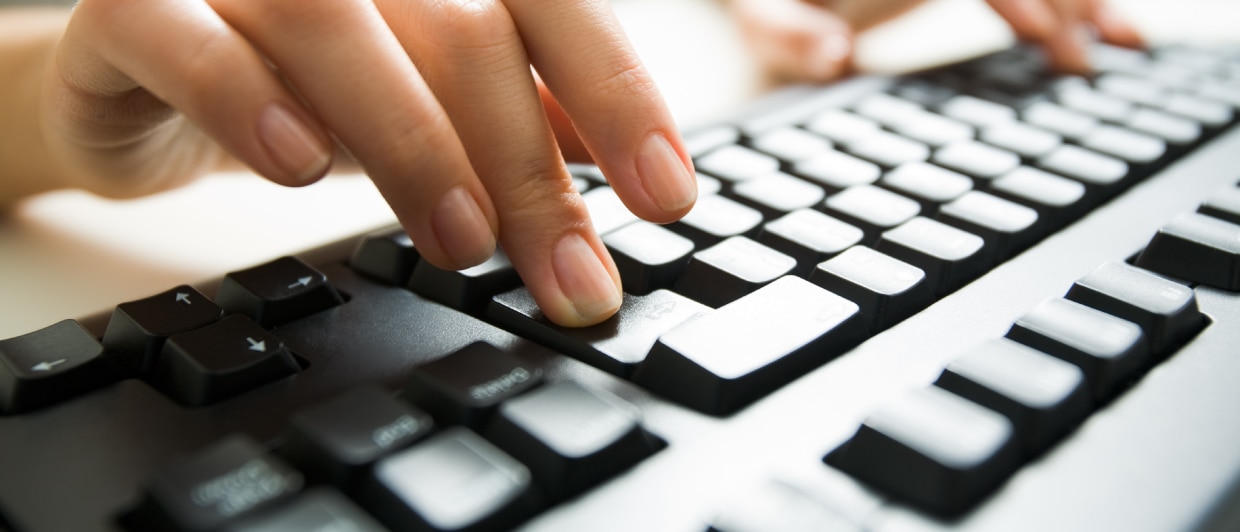

2025 Popular Keyboard Shopping Guide & Recommendation
Many of us spend a lot of time at our keyboards. Whether for work or play, it's important to choose a keyboard that does not strain your hands. But with so many keyboards out there, which one should you choose? The following are some tips on choosing one that’s right for you with recommendations from brands such as Apple , LOGITECH , Razer and iClever.
Different types of keyboards and how they work
1. Membrane keyboards
These consist of three membrane layers. The upper and lower layers are made from soft current conductive film while the middle layer is insulated and offers a conductive contact point. When the user presses a key, the conductive films come into contact with each other and send out a signal. Membrane keyboards are simple in construction and are often used on affordable keyboards which offer a similar touch. However, the rubber keycaps are susceptible to deterioration over time, resulting in a change in the ‘feel’.
2. Scissor keyboards
Scissor keyboards are also membrane keyboards, but with thinner rubber keys and an X-shaped construction. When a key is pressed, the force is evenly distributed throughout the keycap and offers a certain amount of pressure feedback. Scissor keyboards are thin and light in design and offer a stable typing feel. Without the need for extra thickness, this type of keyboard is commonly used in notebooks.
3. Mechanical keyboards
This type has a separate structure for each key, consisting of a base, shaft, shaft cover, spring and metal plate. When a key is pressed, parts of the shaft come into contact with each other to trigger a signal and offer the user pressure feedback. Mechanical shafts are divided into red, brown, green and black types, each with its own characteristics.
Shaft type |
Features |
Suitable for |
|---|---|---|
Red |
• Motion feel: None • Pressing force: slight • Touch sound: gentle |
• Users who press the keyboard lightly • Long term keyboard use |
Brown | • Motion feel: slight • Pressing force: slight • Touch sound: moderate | • Mechanical keyboard entry • Typing and gaming |
Green | • Motion feel: strong • Pressing force: moderate • Touch sound: crisp | • Users who want pressure feedback and sound • Typing tool |
Black | • Motion feel: none • Pressing force: heavy • Touch sound: moderate | • Users who press hard on the keyboard • E-gamers |
Keyboard Buying Tips
Check the following tips to determine your needs and preferences in order to make a more informed decision.
1. Environment
The environment in which you will be using your keyboard is important. If you are in an office or carry your keyboard around, you don’t want a noisy keyboard drawing attention to you. If you are using the keyboard in a crowded area or anywhere with a poor sound containing environment, choose a silent design model or a keyboard with a low noise level to avoid disturbing others.
2. Connectivity
Generally speaking, the PS/2 ports on desktop computers do not support hot plugging or hot swapping, whereas USB ports are more versatile. Some keyboards are wireless and even if connectivity is good, there may be delays. This may not satisfy the needs of pro gamers looking for precision. So, before you purchase a keyboard you should consider what you intend to use it for and the appropriate connections.
3. Anti-jam setting
For gamers, it is important to be able to output multiple keys at the same time without stuttering. Gaming keyboards are generally equipped with anti-jam settings, which means that PS/2-connected keyboards can achieve true N-Key Rollover for conflict-free full key performance. USB connections can only achieve 6-Key Rollover so it’s best to go for an N-Key Rollover.
4. Keyboard language
This affects the layout of the keys and the design of the keycaps. That’s why we often hear that keyboard design varies greatly between countries and regions. Some users are more accustomed to using keyboards with Chinese input characters. Before buying a keyboard, check whether the product has a Chinese keyboard and whether it is marked with your preferred input characters for a smoother typing experience.
5. Keyboard size
The standard Windows keyboard is 104 keys, while the standard Apple keyboard is usually 78/79 keys. Full 104 key keyboards include a numeric keypad on the right-hand side and are ideal for office-related needs. However, for pro gamers, an 87- or 61-key keyboard with fewer numeric and other keys is usually a better option as they offer more room for the mouse to perform.
6. Ergonomics
Ergonomic design makes the keyboard more comfortable to use and helps to reduce work-related fatigue. Many ergonomic keyboards have a figure-of-eight design that allows the hands to use the keyboard in a natural way. For those who spend a lot of time on the keyboard, you may wish to look into ergonomic keyboards to reduce strain.
7. Compatible devices
External keyboards are not only suitable for desktop computers, but also for laptops, tablets and mobile phones. If you need a keyboard to work with different devices, choose one that can switch between different input modes to ensure smooth performance.
8. Backlight function
Some keyboards have a backlight that allows the letters of the keyboard to be clearly displayed in low light conditions to ensure correct keyboard information is entered. For those who are looking for a satisfying gaming experience, choose a keyboard with RGB lighting.

